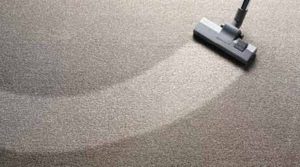This is part two of a three-part article.
Regardless of what carpet cleaning method a facility uses, the “more is better” mindset is still  prevalent in many custodial departments and can be detrimental to both the appearance and longevity of the carpet. Excess cleaning chemicals can exacerbate re-soiling, while oversaturating the carpet can causes odors and even mold issues.
prevalent in many custodial departments and can be detrimental to both the appearance and longevity of the carpet. Excess cleaning chemicals can exacerbate re-soiling, while oversaturating the carpet can causes odors and even mold issues.
“In the past the thinking has been ‘more is better’ — and I’ve been guilty of this, too,” admits McGarvey. “But when we load these carpets up with chemicals, we tend to see resoiling happening more quickly, and it degrades the appearance of the carpet a lot sooner than it should.”
In addition to following equipment manufacturer’s instructions for chemical usage, consultants advise users to rinse chemicals from the carpet thoroughly following hot water extraction, as well as low moisture options — particularly when applying the cleaning product to the carpet via the machine’s tank. The same holds true for interim cleaning methods such as encapsulation.
“When you use an encapsulation system, it’s important to remove the compound because, if you don’t, it will take the dirt off your shoes and leave it in the carpet,” says Bigger.
Just as chemicals need to be removed thoroughly from the carpet after cleaning, custodians need to recover as much water as possible from the carpet and avoid over-wetting it — a mistake that often occurs when dealing with high-traffic areas or stubborn stains.
“Make sure that you get the carpet dry, preferably in four to six hours,” says McGarvey. “Beyond 24 hours, you run the risk of mold growing.”
Air movement and carpet blowers can help to speed up the process, but staff should also check that carpet equipment is in good working order. A clogged vacuum, for instance, may not recover water properly, resulting in longer dry times. Jets should also be flushed on a regular basis to ensure that they don’t get clogged.
“A lot of times, custodians turn on the machine and hear the vacuum or pump and assume it’s working,” says Griffin. “But just because it’s making noise doesn’t mean it’s working properly. You want to inspect it regularly to make sure you’re getting proper flow of the jets and proper suction of the vacuum.”
In addition, tanks should be emptied and rinsed after each use and allowed to air dry to avoid odor problems caused by bacterial growth.

